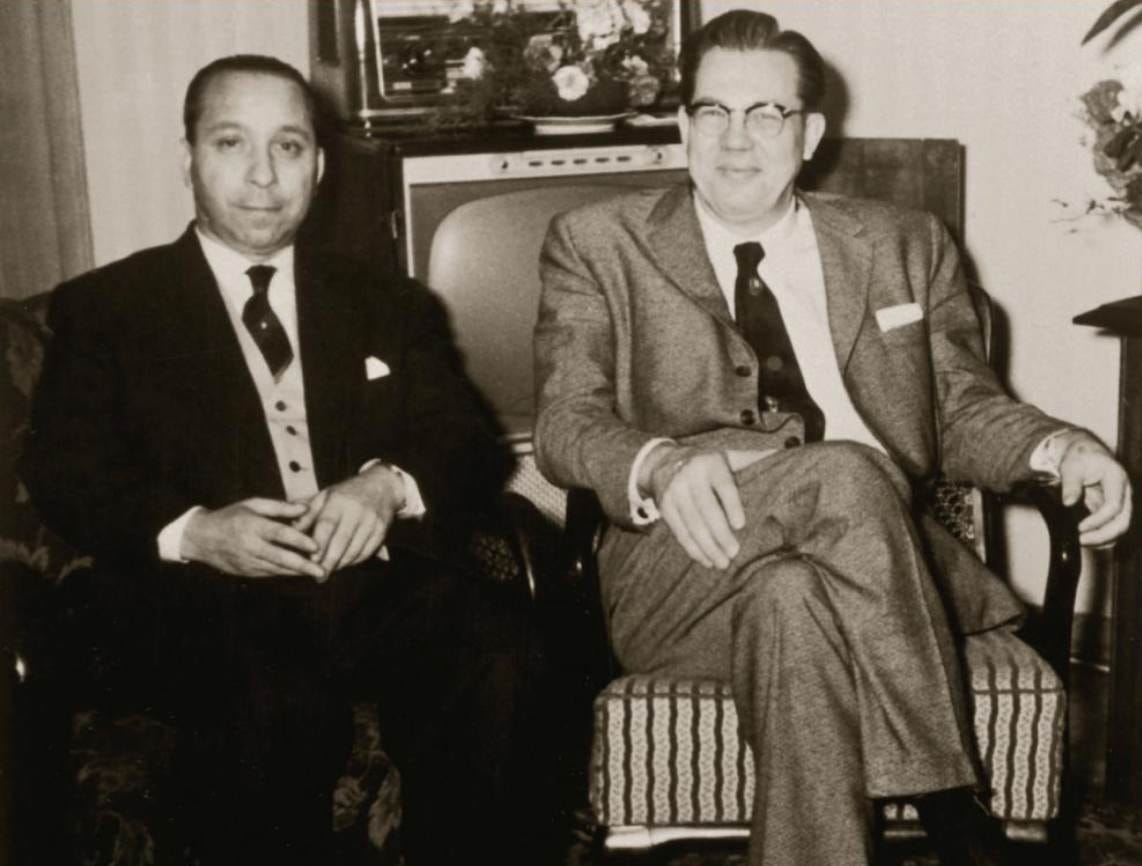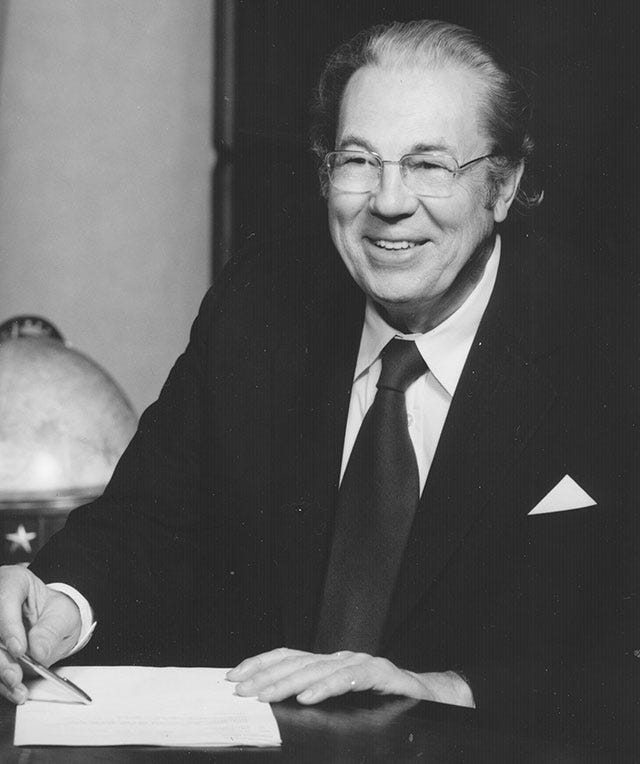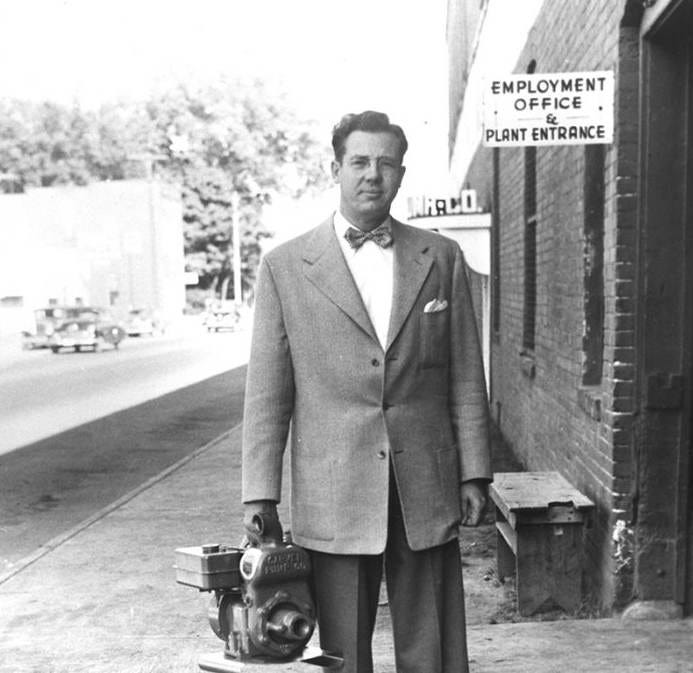Adorable Story #35: Roy J. Carver
From Muscatine, Iowa, a legendary entrepreneur & generous philantropist
“Roy is a high flier”
Roy J. Carver was an industrialist, sports enthusiast, and philanthropist. Mr. Carver was a consummate entrepreneur and together with his wife Lucille became a generous philanthropist, supporting causes throughout Iowa and Illinois.
If you aren’t subscribed yet, hit the subscribe button below to receive the Adorable Stories every weekend, directly in your inbox:
Roy James Carver was born on December 15, 1909 to James R. and Laura (Risley) Carver in Preemption (Mercer County), Illinois.
In 1927, he completed high school in Moline, Illinois.
Carver received a degree in chemistry from the University of Illinois in 1934 and worked for the State Highway Department for four years before he went into business as a pump manufacturer.
Carver Pump
In 1938, during the Great Depression, Carver and his brother Ralph started the Carver Pump Company in Matherville, Illinois. The company created self-priming pumps, and it soon supplied the United States and Allied Forces navies during World War II. The United States’ entry into the war in 1941 coincided with Carver’s decision to buy out his brother’s interests in Carver Pump.
Due to the need for a larger facility, the company was moved from Matherville, Illinois to an abandoned sauerkraut factory in Muscatine, Iowa.
Muscatine would remain the center for Carver’s business operations as well as home for him and his family for the rest of his life. Shortly after his move to Muscatine, Carver married Lucille Young in 1942 and they raised five children.
Bandag
“Opportunity is missed by most people because it is dressed in overalls and looks like work.”
— Thomas Edison
Carver Pump remained part of Carver’s business assets until his death, but Bandag Inc. became synonymous with his success.

During a visit to West Germany in 1957, Carver met Bernhard Anton Nowak who had developed a method of making a sturdier retreaded tire by “curing or vulcanizing rubber tires at lower temperatures than other retreading processes.”
Retreaded tires are cheaper and use ⅓ of the raw materials compared to new tires.
The name Bandag comes in fact from Nowak’s initials (BAN), D for Darmstadt (Germany), and AG — the German notation to signify a public limited company.
Carver spot a potential business opportunity in Nowak’s invention and in 1957 became a partner of Nowak’s Bandag and bought the North American rights to this retreaded tire manufacturing process.
After Nowak died in 1961, Carver bought the worldwide rights to the tire retreading process and gained full ownership of Bandag.
“Cold” process retreads initially proved stronger than tires vulcanized at higher temperatures, but it took considerable research by Carver’s team in Muscatine to develop a tire line that performed to market expectations.
“The Bandag concept was so revolutionary, and there were plenty of skeptics. Mr. Carver stuck with Bandag when many others would have given up or sold out”
— Ron Seiler, one of Bandag’s first managers
Hence, Carver Pump subsidised Bandag in the early years, so much that Carver once said:
“We almost brought the Carver Pump Company to its knees during the time we were developing the product [tires] and preparing it for the American market.”
Carver paid for intensive research on the tire retreading process, which incidentally brought key, industry-wide developments for the whole tire business.
Throughout the 1960s, Carver led Bandag’s day-to-day operations and guided it to going public in 1968.
By the early 1970s Carver had positioned Bandag among the top American corporations. In 1973 sales reached USD 95 million and earned the company the 909th spot among Fortune magazine’s top 1,000 companies.
By the late 1970s, Bandag would expand to more than 850 dealerships in more than 50 countries.
In 1980, Bandag achieved USD 331 million in sales and netted USD 27 million in profits.
By the early 80s, Bandag had operations in 90 countries.
Risky Business
By 1973, Mr. Carver’s wealth was estimated to range from USD 200 million to USD 300 million. However, his wealth was also shrouded in intrigue.
Keep reading with a 7-day free trial
Subscribe to Adorable Times’ Newsletter to keep reading this post and get 7 days of free access to the full post archives.






